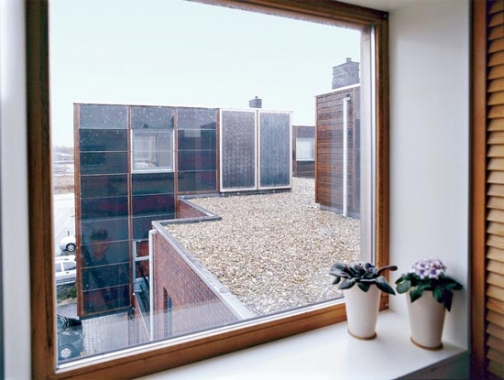Dutch social housing is becoming more eco-friendly
More solar panels and green energy labels in Dutch social dwellings
The Netherlands, 2 September 2013 | Published in Energy
Dutch housing organisations continued to improve the energy efficiency of social dwellings in 2012. This evidence comes from SHAERE, the energy monitor database of Aedes (Dutch federation of social housing organisations).
More houses were given a green energy label (C or higher) and the number of bad labels (E or lower) decreased. In 2012, social housing organisations installed 11.500 solar panels on their dwellings. This is almost twice the amount in 2011, when 5.900 houses were equipped with solar panels. With investments in sustainability and energy, housing costs for tenants are reduced and housing comfort is increased. In addition, energy-efficient homes are more environmentally friendly and gain in value.
Read MoreEnergy labels
In 2012 more than 250.000 rental dwellings from social housing organisations achieved a higher label through energy efficiency measures. And the number of homes with A and B labels increased by resp. 52 and 23 percent. Most of the tenants from social housing organisations, nearly a third, live in a dwelling with a C label now. In 2012 the increase in green energy labels was higher than in 2011.
National Energy Covenant
In the National Energy Covenant for the Rental Sector (June 2012) it was agreed that, on average, housing organisations’ dwellings attain a B label by the end of 2020. Housing organisations improved the energy performance of their dwellings over the past two years, but to achieve that objective the annual amount of energy efficient measures must increase. The question is whether the financial situation of housing organisations will allow them to invest sufficiently in the coming years
More insulation
The SHAERE monitor shows that the insulation of building components rose by 6.8 percent compared to 2011. Glass insulation is most common, namely for 85 percent of rental housing. Floor insulation and draught-proofing progressed the most by 12.3 and 12.4 percent respectively.
Less CO2 emissions
The housing-related CO2 emissions decreased by 2.9 percent. As a result of energy-saving measures the total gas consumption decreased slightly. Due to the use of district heating, new installations and mechanical ventilation, the housing-related heat and electricity usage increased slightly.
SHAERE
The Social Housing Audit and Evaluation Results of Energy (SHAERE) is the official monitor of the National Energy Covenant for the Rented Sector. This database contains all energy performance data from over 1.8 million social dwellings. Amongst other things, SHAERE provides insight in the total energy consumption, CO2 emission, the average Energy Index (EI) and the average label of the participating housing organisations. To measure the progress SAHERE uses organisations’ data for 2011 and 2012. These participants own a total of nearly 1 million homes.